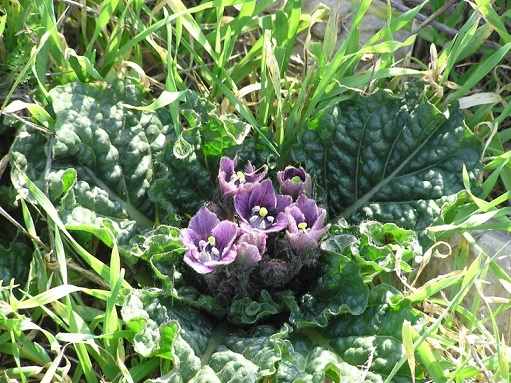At the end of winter in the dry subtropics zone of the southwestern part of Turkmenistan, an amazing phenomenon was observed – the mass flowering of one of the most mysterious medicinal plants in our country – a representative of the rare tertiary flora of the Turkmen mandrake. Bright lilac bells, densely arranged together and pressed to the ground, that are noticeable compared to the background of sleeping nature, are still difficult to consider if you do not know the exact place of growth of the species.
The pharmaceutical properties of the plant have not been fully studied and are now being wrapped in legends and myths. First of all, because of the shape of the root, which is vaguely reminiscent of the human body, it stores a supply of nutrients necessary for vegetation. And it seems that the plant does not agree with the seasons of the year: when all the vegetation “sleeps”, the mandrake grows and blooms in January, and only with the completion of fruiting in May does its entire green part die off, and the plant goes into suspended animation until the next fall coolness.
In the Makhtumkuli etrap, the belt of the plant range is located at an altitude of up to 800 meters above sea level, where it rests on the slopes among the prickly “Christ’s-thorn”, coffee berry, small-fruited cherries, panicle almonds, which look little like a deciduous tree, with almost leafless twigs. The mandrake has no stem; leaves are spread out on the ground with a rosette. The larger and larger they are, the more mature the individual. The seedling is formed from a seed, there are many of them in the fruits – ripe, they acquire a yellow-orange saturated color. It looks glossy, with a strong smell of melon. At this point, the fruits are edible, fleshy in taste, pleasantly sour, slightly sweet, with a faint aftertaste of unripe tomato. But the mandrake is from solanaceous, and the cultivated tomato belongs to the same family.
However, it should be remembered that the fruit of this plant is far from a tomato, which we cut into a vitamin salad. Meanwhile, among the revealed properties of wild nightshade is anesthetic, sleeping pills. Mandrake root is used in the treatment of gout, leaves for hard-to-heal wounds, and ripe fruits for scurvy and ulcers. Tincture from fruits relieves nervous tension and has a calming effect on the general condition of the body. This narrow-local endemic of Turkmenistan is listed in the national Red Book.
In order to preserve the population, the plant was introduced into the culture, in the conditions of Ashgabat, in the presence of pollinating insects during the flowering period, scientists with varying success since 2005 received from one plant up to 19 fruits, each fruit containing up to 70 seeds. Obtaining local reproduction material allowed to increase the area under crops. Phenological observations and a study of the biological properties of the plant, conducted several years ago, showed that the mandrake is very responsive to agricultural activities – cultivating, watering and fertilizing with organic matter.
Eke ATAYEV,
Doctor of Biological Sciences








Comments